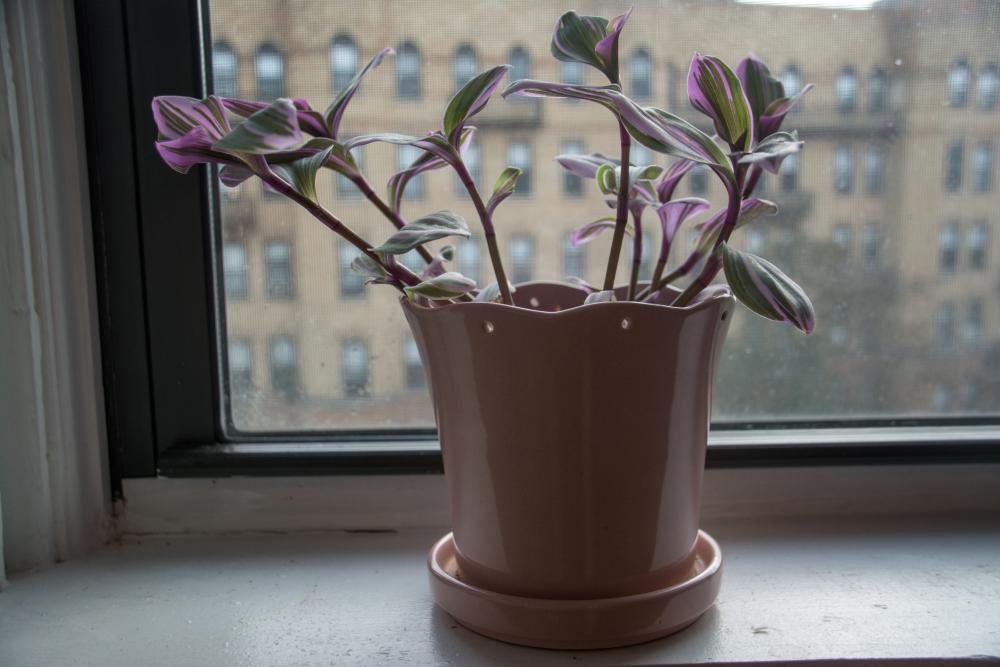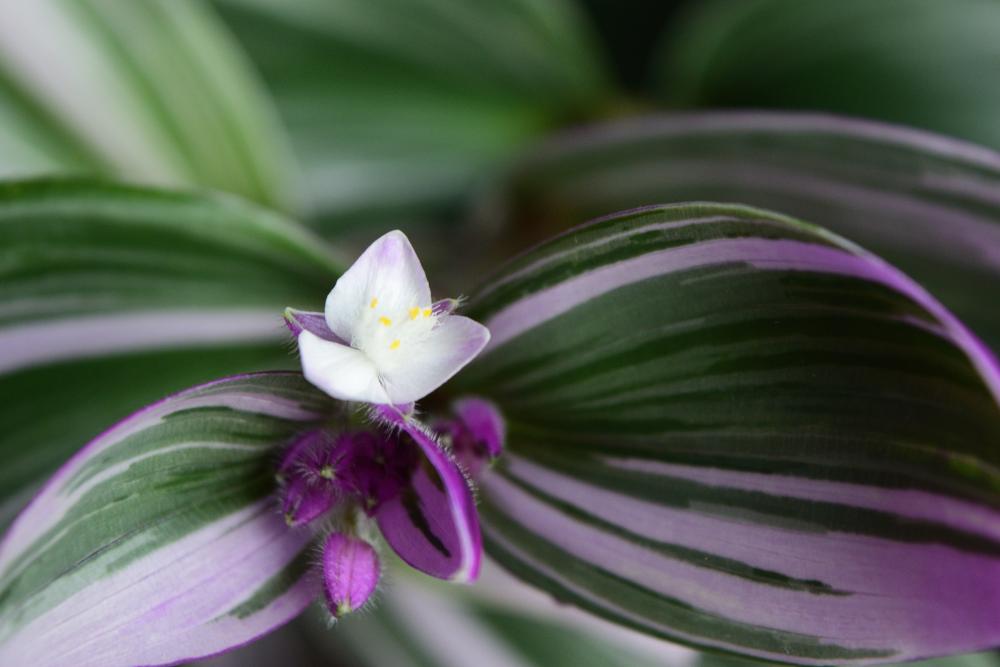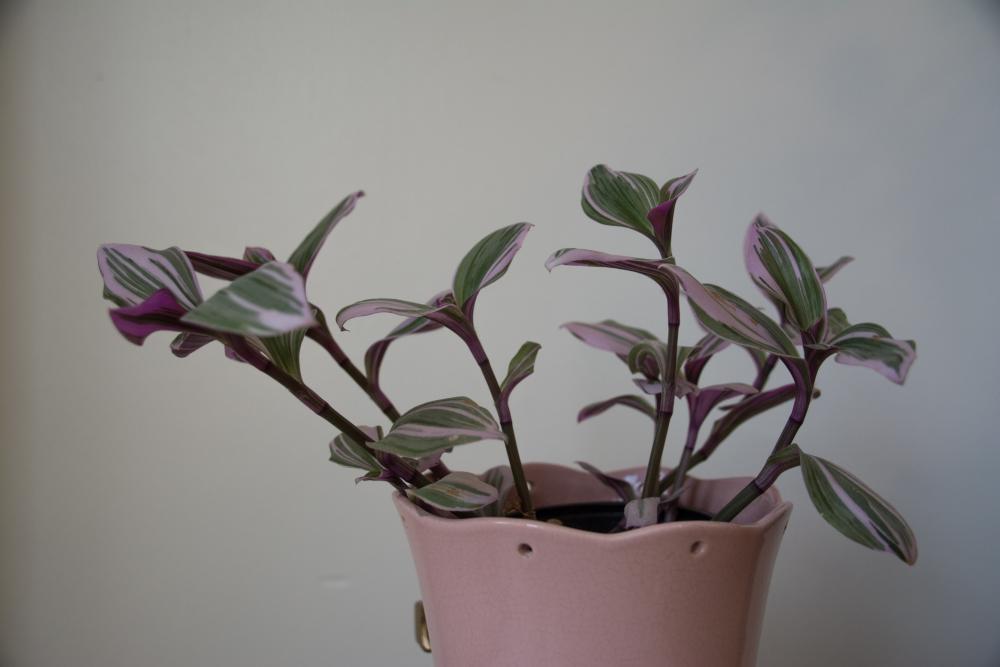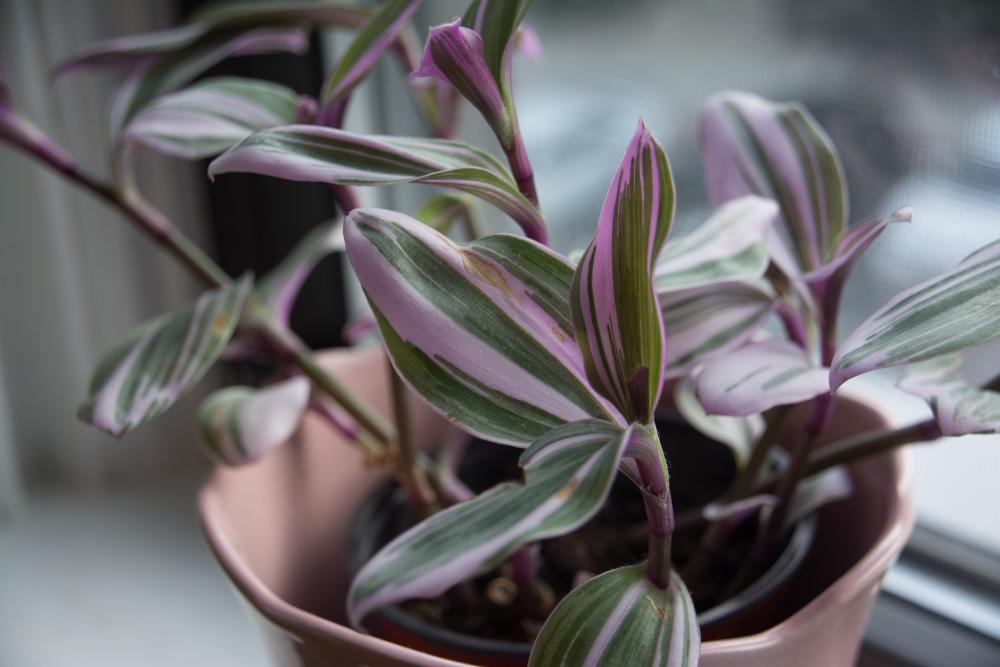Tradescantia Nanouk Care: How to Grow & Care for the Fantasy Venice Plant
There are chances you’ve come across the Fantasy Venice somewhere on social media or your closest gardening store. The whole fuss about this plant has been brought about by its capacity to produce showier flowers than other Tradescantia types.
If you want to have a houseplant with lush foliage and a couple of variegated traits, then you probably want to try growing this patented type. Keep reading to learn how to grow and care for the Tradescantia Nanouk plant.
More About the Fantasy Venice Plant
The cultivar dates back to 2012 where it was bred in the Netherlands during a program that was aimed at coming up with a more petite Tradescantia type with vivid blooms and hardier traits. But the indigenous place of this patented plant spreads across Mexico, South America, and Central America. It’s keen to note that Tradescantias are more of herbaceous perennial plants and are members of the Commelinaceae family.
The plant features sturdier leaves compared to other members and the foliage is dense-green with some purple markings on it. What we adore about the Fantasy Venice plant the most is its constructive design and growing pattern that makes it perfect for landscaping or decorating your interior.It grows compactly yet in a flaming pattern that makes the houseplant look glorious inside a hanging basket. The other major selling point is its ability to produce bright and showy flowers during the blooming season. It’s easy to grow and care for this flowering patented plant if you have the right caring requirements and can keep tabs with them in a consistent pattern.
Tradescantia Nanouk Caring Tips
Flowering & Fragrance
Blooming will begin to emerge from the spring season till the early weeks of autumn. During this period, you can expect your Fantasy Venice to produce some white or pink flowers. If it’s growing indoors where controlling the room conditions is much easier, your Fantasy Venice will bloom through the winter months. The blooms usually sprout from pink buds and reproduce via cross-pollination.
Size & Growth
When growing under suitable conditions, the Tradescantia Nanouk tends to be a fast grower. It, however, grows quite compactly. On the bright side, the entire foliage spreads in an even pattern. The average height your Fantasy Venice will achieve is about 3.5’ inches. It features thick stems and leaves whose underside is a bit hairy. Since this type is variegated, the leaves might come in different shades of light purple, gray, cream, and pink.
Watering & Feeding
Same with most other houseplants, you want to keep the Tradescantia Nanouk plant from the dreadful effects of overwatering. When watering the potting soil, wait till becomes dry, then thoroughly soak it wet. During a warmer growing season, it’s typical for the houseplant to do well with a once-a-week watering interval.Don’t let the roots get stuck in soggy soil for long as it would lead to rotting. If the plant starts to get fussy and appears dull, then that could be a sign of overwatering.
Most Tradescantia types aren’t heavy feeders, so you won’t necessarily need to depend on fertilizers during growing seasons. It’s also worth noting that overfertilizing can cause the leaf tips to turn brown. You can make the best use of liquid organic fertilizers that are soluble such as fish emulsion, bone meal, or blood meal. The other option would be to try out an all-purpose fertilizer such as the Miracle-Gro plant food. It’s always best to follow the instructions listed on the label to avoid the effects of overfertilizing.
Light & Temperature
If you’re growing your Tradescantia Nanouk in an indoor setting, keep it in a position where it gets bright, indirect sunlight. Keeping the growing medium in a spot where it can access bright indirect light boots up the chances of producing flowers during the blooming period. Growing it in a low-light location will cause the plant to suffer from etiolation and the foliage color will look pale. For optimal growth, grow your Fantasy Venice in an environment where the average temperature ranges anywhere between 55 to 75 degrees Fahrenheit. When growing outdoors, the plant will only have hardy traits only if it’s growing in USDA hardiness zones 10 to 12. The plant prefers a temperature range that doesn’t fall below 50 degrees Fahrenheit when growing outdoors. If achieving the range proves difficult, then it would be ideal to move the growing medium indoors. Otherwise, the plant will die of frost.
Soil & Transplanting
The Tradescantia Nanouk isn’t fussy when it comes to its overall soil requirements. It can sprout and grow fairly well in general potting soil. However, since the plant needs to grow in an environment that’s slightly humid, there will be a great need to making a few amendments to the potting soil. In other words, what you want to focus on is improving the overall rate of moisture retention. And to do that, you might consider using amendments such as peat moss or vermiculite. A portion of perlite or coarse and will also help the soil structure be a bit lighter. When growing indoors, the Fantasy Venice plant will need nutrient-rich soil.
So, apart from peat moss, it’s best to add organic material such as mulch or compost. Mulching helps the soil retain the right amount of moisture and lets out any excess water pass through with ease. Since this incredibly looking houseplant can grow compactly inside a hanging basket, there won’t be an intense need for transplanting. The only moment you might need to move it into a new container is if the plant is becoming root-bound or the old soil isn’t carrying any nutritional value anymore. Make sure to pot the plant in a soil structure that has loosed up a bit. Dense potting soil causes root rot. You want to use a container with enough drainage holes that will let out any excess moisture.
Grooming & Maintenance
To encourage more growth, you’ll need to keep trimming the foliage back. While doing so, try to inspect the plant for any leggy growth that could be a result of improper lighting conditions. Get rid of any weak stems or faded leaves. As a mitigation measure, move the growing medium to a location where it can tap enough bright, indirect sunlight. Also, don’t miss replacing the old soil or make necessary amendments once all the essential nutrients have depleted.
How to Propagate the Fantasy Venice Plant
Propagating the Tradescantia Nanouk is a painless exercise. One of the most straightforward ways to reproduce this houseplant is via stem cuttings. You just need to pick the cuttings from a mother plant that looks healthy and has been well taken care of in regards to the growing conditions. While propagating the Fantasy Venice in soil still remains a viable option, using water is much more convenient, especially if you want to keep monitoring the development of roots. To propagate successfully using stem cuttings, you need to:
- Source the stem cuttings from a healthy mother plant. The cuttings need to have at least two or three sets of leaves. Just get rid of the lower leaves.
- Make sure to use sterilized tools when dissecting the cuttings to avoid the spread of infections.
- Place the cuttings inside a half-full glass jar of water. Each cutting should be in an individual container. To propagate using soil, prepare the structure using the requirements we just highlighted in the soil and transplanting section.
- Place the containers in a warm and bright environment. At the same time, you want to protect your cuttings from any intense heat or light.
- After a few weeks, roots will have emerged right from the submerged leaf nodes. Add water when necessary.
- When the roots are about 2’ inches long, the cuttings will be ready to be potted into individual containers.
Common Pest & Disease Problems
One of the common issues with houseplants of such nature is they get overly sensitive to the effects of overwatering. Loss of leaf color and root rot are some of the problems your Fantasy Venice plant will experience if the soil structure can’t let out any excess moisture effectively. The areas between the leaves can also be prone to intense moisture, so you want to avoid overhead watering at all costs. Too much moisture breeds a number of harmful fungal infections. You also need to work with constant watering intervals. It’s best to strike a balance by keeping the soil evenly moist but not leaving it too dry. Give the soil some grace period to dry out before watering your Fantasy Venice once again.
Keep the growing medium in a spot where the entire foliage receives enough bright, indirect sunlight. The goal is to prevent the stems and leaves from experiencing leggy growth. A location close to an east-facing window would be ideal. Some of the frequent pests that like to infest this houseplant include spider mites, mealybugs, and scale insects. You can mist the plant with isopropyl alcohol diluted with water at half its strength to get rid of spider mites. Some mealybugs are usually visible if the infestation is significant, so it’s easy to pick them by hand.



